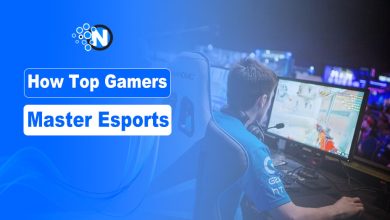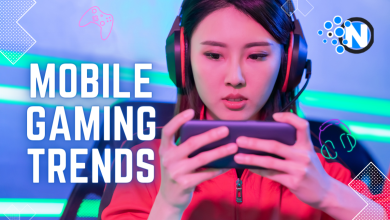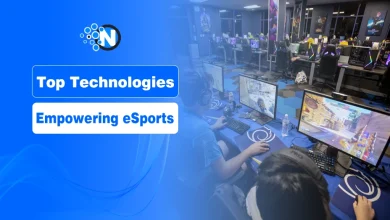Gaming and Tech – How New Innovations Are Redefining Our Free Time
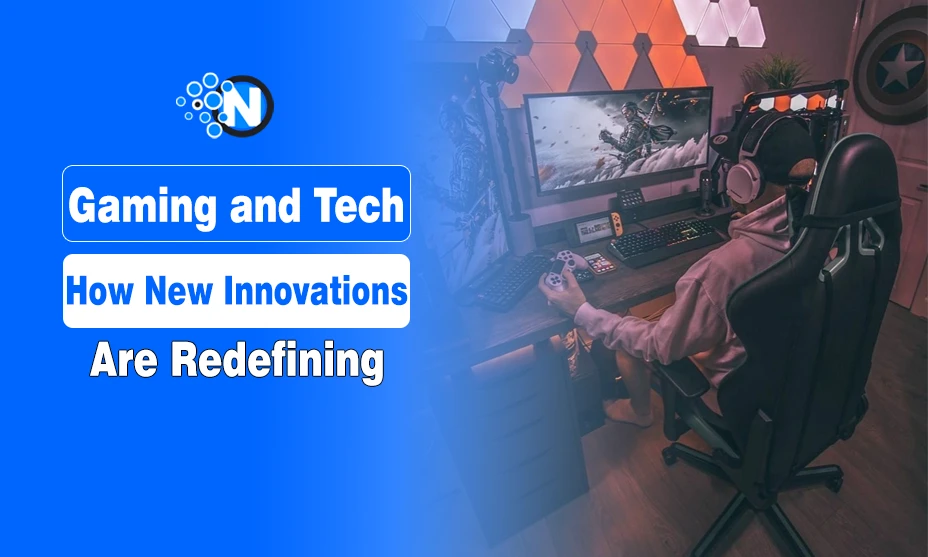
Technological advancements in the gaming sector continue to alter the utilization of leisure time. Increasing efficiency and complexity within interactive digital environments are redefining recreational activities and how we experience them.
The integration of emerging technologies enhances accessibility, immersion, and engagement across multiple entertainment platforms, providing users with new methods of digital interaction that extend beyond conventional entertainment paradigms.
In this article, I’ll be covering some major factors that explain the innovations taking place in both the gaming and tech sectors. Let’s start.
Ways Innovations Are Redefining Gaming and Tech
The gaming industry is rising with a large number of users. However, the latest tech innovations in gaming are streamlining the process. The following factors and key points explain it in a proper way:
1 – Optimization of iGaming Authentication
The necessity for enhanced security and efficiency in online gaming authentication still exists and is arguably more important than ever. Users require streamlined access protocols that maintain encryption integrity. For example, Samba Slots login mechanisms incorporate advanced security parameters, reducing authentication latency while preserving data protection measures.
With platforms like it providing benefits like instant payouts, crypto as a payment method, and unique bonuses, added security is a must. As such, biometrics, blockchain-based verifications, and single sign-on infrastructures are used to optimize authentication operations, thereby reducing friction in user access pathways.
These methodologies enhance system operability, ensuring uninterrupted entry into gaming interfaces with minimal cognitive load associated with password management.
The acceleration of AI-driven fraud detection further strengthens security, mitigating risks related to identity theft and unauthorized account infiltration. Adaptive authentication measures utilize behavioral analysis and continuous monitoring to detect anomalies in real time, reinforcing access control and operational security within digital gaming networks.
2 – Deployment of Cloud-Based Gaming Infrastructure
The implementation of cloud computing has eliminated the requirement for high-performance hardware, enabling digital game rendering through remote processing units. Services such as Xbox Cloud Gaming and NVIDIA GeForce Now distribute computational workloads, facilitating high-fidelity graphical output on lower-specification devices.
This framework expands gaming accessibility, removing economic barriers associated with traditional gaming hardware acquisition. The transition to cloud-dependent ecosystems amplifies resource efficiency, allowing for dynamic performance scaling according to user demands.
Latency reduction technologies, such as edge computing integration, further optimize streaming responsiveness, ensuring near-instantaneous input feedback and enhanced multiplayer synchronization. AI-enhanced bandwidth management algorithms further refine streaming efficiency, dynamically adjusting data transmission rates based on user connection stability.
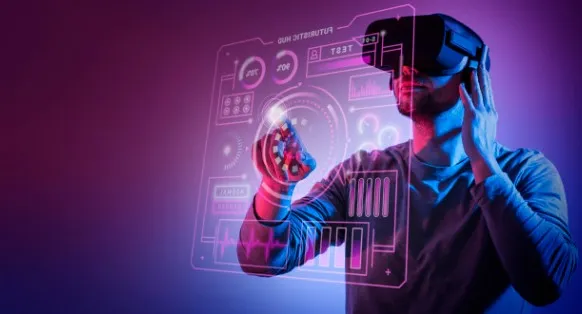
3 – Artificial Intelligence Integration in Gaming Environments
Machine learning and artificial intelligence algorithms facilitate adaptive gameplay elements by analyzing user interaction patterns. AI-driven engines modulate environmental conditions, non-player character behavior, and real-time scenario adjustments based on predictive analytics.
Virtual assistants and AI-generated testing and support modules provide immediate troubleshooting resolutions, improving operational efficiency within gaming networks. These implementations enable personalized gaming frameworks, autonomously adjusting parameters to optimize player engagement metrics.
Additionally, AI-generated procedural content creation enhances game longevity by dynamically constructing environments, storylines, and challenges tailored to individual user preferences. AI-enhanced difficulty modulation further refines user experience, adjusting challenge levels dynamically to maintain optimal engagement and retention rates.
4 – Expansion of Virtual Social Environments via Metaverse Development
The metaverse constitutes a convergent digital ecosystem wherein virtual interactions occur in immersive three-dimensional spaces. Multiplayer gaming infrastructures integrate persistent virtual spaces, allowing synchronized social engagements beyond conventional gaming mechanics.
Platforms such as Fortnite, Roblox, and VRChat establish persistent interactive domains, augmenting user retention through virtual economy constructs. The continued refinement of metaverse architectures will yield increased interconnectivity between digital assets and real-world economic structures.
Enhanced AI-driven avatars, coupled with decentralized ownership frameworks, promote unique user identities and economic autonomy within digital environments, facilitating real-time social networking in an immersive setting. The integration of decentralized autonomous organizations (DAOs) within metaverse economies further strengthens user governance and resource distribution models.

5 – Evolution of Competitive Gaming Dynamics
The professional gaming industry demonstrates exponential growth, paralleling traditional sports in terms of audience engagement and financial structuring. Competitive gaming tournaments generate substantial revenue streams, facilitated by high-bandwidth streaming platforms including Twitch and YouTube Gaming.
Advances in input-response mechanisms, including high-refresh-rate display technologies and latency-reduction protocols, optimize competitive gameplay precision. The integration of adaptive input systems ensures increased accessibility for diverse participant demographics.
Advanced spectator engagement tools, such as real-time data analytics overlays, further enhance audience interactivity, providing enriched insights into gameplay strategies and team performance metrics. AI-generated match analysis further refines strategic breakdowns, enhancing both player preparation and audience understanding of competitive dynamics.
6 – Expansion of Mobile Gaming Market Penetration
The proliferation of advanced mobile processing units facilitates the execution of high-performance gaming applications on portable devices. Developers optimize rendering algorithms to deliver console-equivalent visual fidelity on mobile hardware.
The widespread adoption of 5G connectivity infrastructures enables reduced network latency, enhancing real-time multiplayer functionalities. Mobile gaming remains a dominant sector due to its scalability and ubiquity within global digital ecosystems.
Augmented reality (AR) enhancements integrate real-world elements into mobile gaming, broadening the scope of interactive engagement. AI-assisted gesture recognition further refines user interaction, allowing for increased precision in augmented and mixed-reality applications.

7 – Implementation of Blockchain and Digital Asset Ownership
Decentralized ledger technology influences gaming economies by introducing verifiable digital asset ownership. Play-to-earn systems leverage cryptocurrency mechanisms to incentivize user participation through tokenized rewards.
Non-fungible tokens (NFTs) establish unique in-game item provenance, facilitating secure asset transfers between players. Blockchain protocols ensure data immutability, reinforcing transactional integrity within gaming platforms.
The adoption trajectory of blockchain gaming indicates long-term structural integration within virtual economies. Smart contract automation within gaming ecosystems streamlines marketplace transactions, reducing intermediary dependencies while enhancing transparency and security.
8 – Enhancements in Gaming Hardware Capabilities
Next-generation gaming consoles, including PlayStation 5 and Xbox Series X, incorporate advanced graphical processing units and high-speed storage architectures to reduce computational bottlenecks. The development of high-performance gaming PCs leverages innovations in cooling mechanisms, solid-state drives, and artificial intelligence-assisted rendering technologies.
Virtual reality hardware undergoes iterative refinement, with augmented tracking precision and increased display resolutions enhancing immersion levels. The convergence of advanced hardware and software frameworks contributes to the increased realism of interactive digital experiences.
Haptic feedback advancements and full-body motion tracking systems further expand sensory engagement, deepening the physical interaction between users and digital environments. AI-enhanced predictive rendering improves frame rate consistency, mitigating performance fluctuations during intensive graphical workloads.
9 – Trajectory of Gaming-Technological Synergy
Continuous evolution within gaming technologies suggests a sustained trajectory of enhanced interactivity, personalized engagement, and ecosystem interconnectivity. Artificial intelligence, blockchain infrastructures, and cloud computing frameworks will progressively redefine user experiences, facilitating seamless digital integration into daily routines.
The continual enhancement of entertainment platforms ensures optimized accessibility and operational efficiency across gaming environments.
Predictive analytics in user engagement strategies will enable tailored content delivery, reinforcing long-term retention. The integration of quantum computing paradigms in future gaming systems holds the potential for exponential computational acceleration, paving the way for hyper-realistic simulations and next-generation virtual experiences.
Conclusion
Technology, just like in every other major sector of life, is innovating the fields of tech and gaming as well. Many new trends and innovations are making gaming more convenient and accessible for people.
Cloud-based infrastructure and Artificial Intelligence are playing a huge part in this. Besides that, the implementation of blockchain and the manufacturing of better gaming hardware are making changes in it as well.
Frequently Asked Questions (FAQs):
Is gaming a tech industry?
Of course. Gaming has now become a proper tech industry. It involves the usage of some of the most advanced tech trends such as software and hardware integration. It now also involves advanced trends like AI and blockchain.
How has the technology impacted gaming?
The technology has impacted the gaming industry in many ways. It is making better software and hardware to make gaming more realistic and engaging. Besides that, it is also making sure that people from around the world has easy access to it.
What is the future of gaming?
The future of gaming is pretty bright. The technology is heading into the right direction and soon will make this industry even better. The top trends like AI and machine learning will make games better and more responsive.
What is the latest technology for gaming?
The latest technology being used in this industry are AI and VR. Both of these technologies are making games realistic and responsive. They offer a unique and engaging gaming experience to users.


